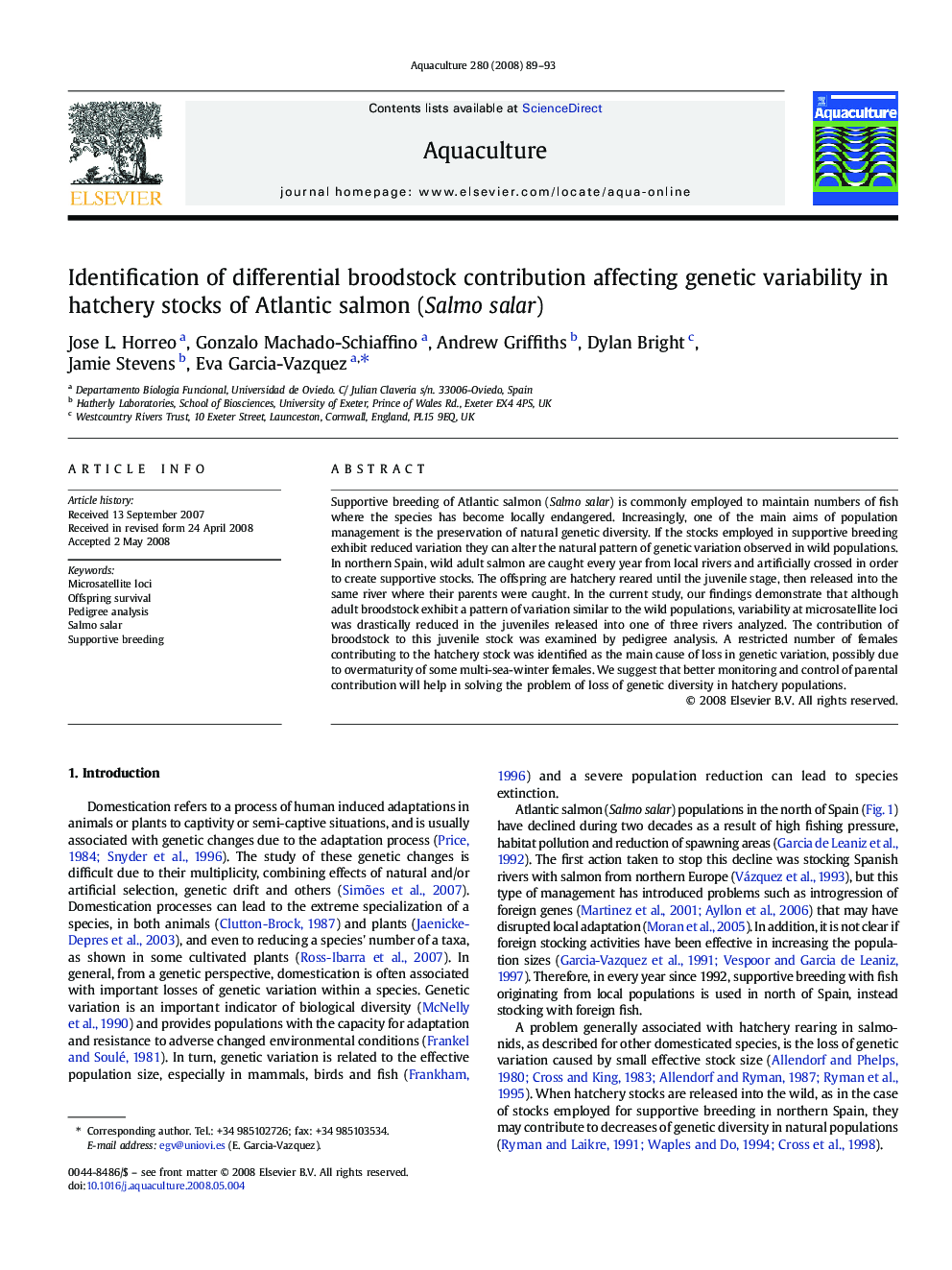| Article ID | Journal | Published Year | Pages | File Type |
|---|---|---|---|---|
| 8496252 | Aquaculture | 2008 | 5 Pages |
Abstract
Supportive breeding of Atlantic salmon (Salmo salar) is commonly employed to maintain numbers of fish where the species has become locally endangered. Increasingly, one of the main aims of population management is the preservation of natural genetic diversity. If the stocks employed in supportive breeding exhibit reduced variation they can alter the natural pattern of genetic variation observed in wild populations. In northern Spain, wild adult salmon are caught every year from local rivers and artificially crossed in order to create supportive stocks. The offspring are hatchery reared until the juvenile stage, then released into the same river where their parents were caught. In the current study, our findings demonstrate that although adult broodstock exhibit a pattern of variation similar to the wild populations, variability at microsatellite loci was drastically reduced in the juveniles released into one of three rivers analyzed. The contribution of broodstock to this juvenile stock was examined by pedigree analysis. A restricted number of females contributing to the hatchery stock was identified as the main cause of loss in genetic variation, possibly due to overmaturity of some multi-sea-winter females. We suggest that better monitoring and control of parental contribution will help in solving the problem of loss of genetic diversity in hatchery populations.
Related Topics
Life Sciences
Agricultural and Biological Sciences
Aquatic Science
Authors
Jose L. Horreo, Gonzalo Machado-Schiaffino, Andrew Griffiths, Dylan Bright, Jamie Stevens, Eva Garcia-Vazquez,
